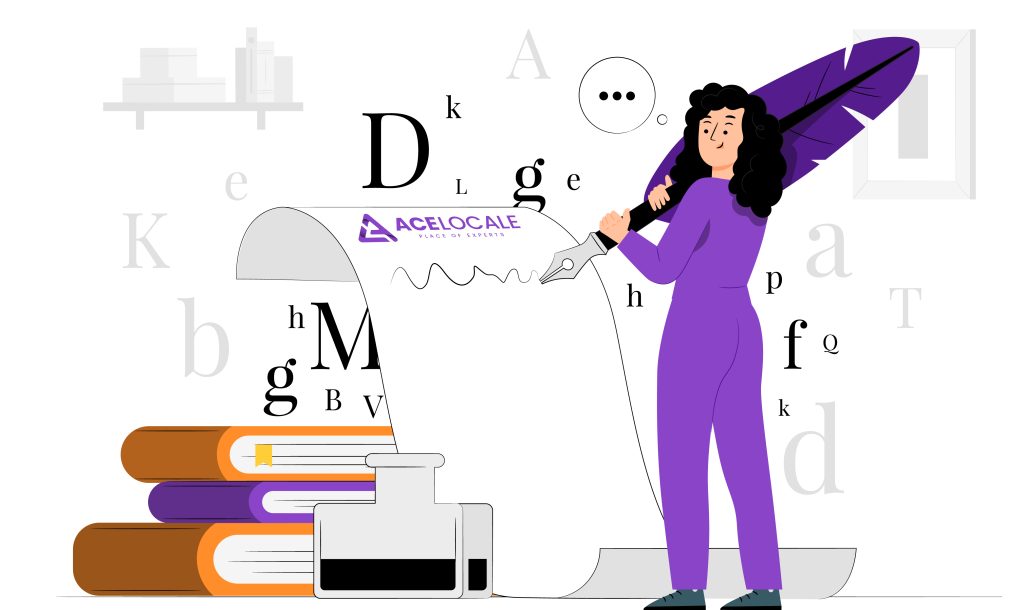Editing Vs. Proofreading
By definition, proofreading is a surface-level check. It is the final check performed on a document. A proofreader will look for misspellings, incorrect/missed punctuation, inconsistencies (textual and numerical), etc. Editing, on the other hand, corrects issues at the core of writing like sentence construction and language clarity. A thorough editing will help improve the readability, clarity, and tone of the text. An editor will scrutinize and polish your writing for a smooth narration.
The Difference Between Editing and Proofreading
Editing and proofreading are two different processes. Editing is the process of making a written work “presentable” by making sure it is well-written, error-free, and follows the guidelines of style. Proofreading involves reading an existing written work to ensure that it meets its objectives and is error-free.
In this blog, we’re going to discuss the difference between editing and proofreading in detail. We will also tell you how to identify if your manuscript needs editing or proofreading help.
What is editing?
Editing is the process of making changes to a text for purposes such as clarification, correction, and improvement. It may also be called revising or tweaking. In general, it can be done by computer programs or humans.
Editing can be done before or after proofreading. Editing is typically the last step in the writing process and can include everything from making grammatical and spelling corrections to substantive changes. It is important to note that editing is not the same as proofreading. Unlike editing, which makes changes to a piece of written work, proofreading involves checking for errors in a text with the aim of ensuring that it is error-free.
Editing and proofreading are often done together. They are two different processes with different goals and methods. While editing aims to improve a piece of writing, proofreading ensures that it is error-free. However, both processes are essential when it comes to creating high-quality written work.
What is proofreading?
– Both proofreading and editing are vital to the process of writing a document. However, there is a difference between the two tasks.
– Editing is the process of making changes to a document to improve its readability, style, and structure. It is more focused on grammar, spelling, and punctuation.
– On the other hand, proofreading is the process of reviewing a document for accuracy and correcting any errors. In this task, you focus more on content rather than style. A person doing this job would check the grammar and spelling of the text as well as its format and flow.
However, it is important to understand what constitutes an error before starting either task. Remember that both editing and proofreading are vital parts of writing a document.
Frequently Asked Questions
What is the difference between editing and proofreading?
There is a big difference between editing and proofreading.
Editing is the process of making changes to a document, while proofreading is the process of checking the accuracy of a document. Editing may involve correcting grammar and punctuation, while proofreading may also involve checking for typos and formatting errors.
How do editing and proofreading work?
Editing and proofreading are two different but essential tasks that need to be completed before a text is published.
Editing is the process of making changes to a text that does not affect the meaning or grammar. This includes fixing typos, changing awkward word order, and tightening up the language overall.
Proofreading is the process of reviewing a text for accuracy and consistency. This includes checking for spelling mistakes, ensuring that all references are accurate, and making sure that all citations are in place.
Editing and proofreading can be done by a single person or a team. When it’s done by a team, it’s typically called copyediting or proofreading.
Editing and proofreading can be done before or after the text is published. It can also be done at different stages of the publishing process, such as pre-production, production, post-production, and launch.
What are the benefits of editing and proofreading?
Editing and proofreading are both important processes that can help you improve the quality of your work.
Editing is the process of making corrections to a document. This can be done through a variety of methods, such as editing style, grammar, and punctuation. Editing can help to improve the clarity, correctness, and flow of a document.
Proofreading is the process of ensuring that the text of a document is accurate and free from errors. This includes checking for typos, inconsistencies, and other mistakes. Proofreading can help you avoid potential copyright infringement.
Editing and proofreading can also help you improve your skills as a writer. By fixing small errors in your work, you can increase its clarity and professionalism. Furthermore, by catching inconsistencies and other errors before they become public, you can preserve your document’s integrity and prevent any legal issues from arising.
Conclusion
Editing is a subjective process that requires a lot of skill and experience to get right. On the other hand, proofreading is an objective process that consists of scanning the written material for errors and omissions. While editing helps you improve your writing style, proofreading ensures that the written material is error-free. If you’re looking to become a better writer, try using a series of trusted tools to help you craft more effective content.


I needed to thank you for this fantastic read!! I definitely loved every bit of it. I have you book-marked to check out new things you postÖ
Thank you for your appreciation. Stay tuned for more updates.
I think this web site has got some really excellent information for everyone :D. “Calamity is the test of integrity.” by Samuel Richardson.
I’m not that much of a online reader to be honest but your blogs really nice, keep it up! I’ll go ahead and bookmark your website to come back later. All the best
Thank you for your appreciation. Stay tuned for more updates.